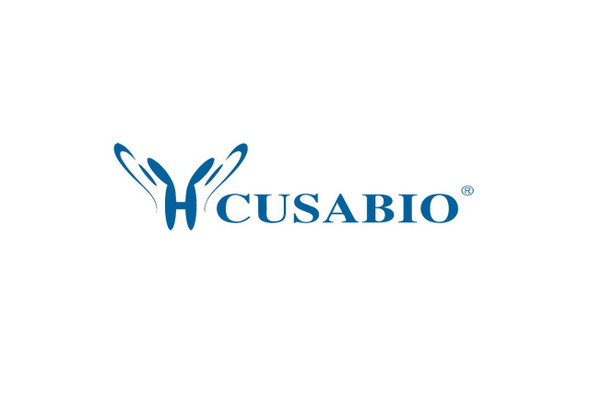Cusabio Human Recombinants
Recombinant Human Glycogen phosphorylase, liver form (PYGL), partial | CSB-EP019122HU
- SKU:
- CSB-EP019122HU
- Availability:
- 13 - 23 Working Days
Description
Recombinant Human Glycogen phosphorylase, liver form (PYGL), partial | CSB-EP019122HU | Cusabio
Alternative Name(s): Glycogen phosphorylase; Glycogen phosphorylase L; Glycogen phosphorylase liver; Glycogen phosphorylase liver form; GSD6; Hers disease; glycogen storage disease type VI; liver form; OTTHUMP00000233649; OTTHUMP00000233651; Phosphorylase glycogen liver; Pygl; PYGL_HUMAN
Gene Names: PYGL
Research Areas: Metabolism
Organism: Homo sapiens (Human)
AA Sequence: AKPLTDQEKRRQISIRGIVGVENVAELKKSFNRHLHFTLVKDRNVATTRDYYFALAHTVRDHLVGRWIRTQQHYYDKCPKRVYYLSLEFYMGRTLQNTMINLGLQNACDEAIYQLGLDIEELEEIEEDAGLGNGGLGRLAACFLDSMATLGLAAYGYGIRYEYGIFNQKIRDGWQVEEADDWLRYGNPWEKSRPEFMLPVHFYGKVEHTNTGTKWIDTQVVLALPYDTPVPGYMNNTVNTMRLWSARAPNDFNLRDFNVGDYIQAVLDRNLAENISRVLYPNDNFFEGKELRLKQEYFVVAATLQDIIRRFKASKFGSTRGAGTVFDAFPDQVAIQLNDTHPALAIPELMRIFVDIEKLPWSKAWELTQKTFAYTNHTVLPEALERWPVDLVEKLLPRHLEIIYEINQKHLDRIVALFPKDVDRLRRMSLIEEEGSKRINMAHLCIVGSHAVNGVAKIHSDIVKTKVFKDFSELEPDKFQNKTNGITPRRWLLLCNPGLAELIAEKIGEDYVKDLSQLTKLHSFLGDDVFLRELAKVKQENKLKFSQFLETEYKVKINPSSMFDVQVKRIHEYKRQLLNCLHVITMYNRIKKDPKKLFVPRTVIIGGKAAPGYHMAKMIIKLITSVADVVNNDPMVGSKLKVIFLENYRVSLAEKVIPATDLSEQISTAGTEASGTGNMKFMLNGALTIGTMDGANVEMAEEAGEENLFIFGMRIDDVAALDKKGYEAKEYYEALPELKLVIDQIDNGFFSPKQPDLFKDIINMLFYHDRFKVFADYEAYVKCQDKVSQLYMNPKAWNTMVLKNIAASGKFSSDRTIKEYAQNIWNVEPSDLKISLSNESNKVNG
Source: E.coli
Tag Info: N-terminal GST-tagged
Expression Region: 2-846aa
Sequence Info: Partial
MW: 123.9 kDa
Purity: Greater than 90% as determined by SDS-PAGE.
Relevance: Phosphorylase is an important allosteric enzyme in carbohydrate metabolism. Enzymes from different sources differ in their regulatory mechanisms and in their natural substrates. However, all known phosphorylases share catalytic and structural properties.
Reference: The DNA sequence and analysis of human chromosome 14.Heilig R., Eckenberg R., Petit J.-L., Fonknechten N., Da Silva C., Cattolico L., Levy M., Barbe V., De Berardinis V., Ureta-Vidal A., Pelletier E., Vico V., Anthouard V., Rowen L., Madan A., Qin S., Sun H., Du H. , Pepin K., Artiguenave F., Robert C., Cruaud C., Bruels T., Jaillon O., Friedlander L., Samson G., Brottier P., Cure S., Segurens B., Aniere F., Samain S., Crespeau H., Abbasi N., Aiach N., Boscus D., Dickhoff R., Dors M., Dubois I., Friedman C., Gouyvenoux M., James R., Madan A., Mairey-Estrada B., Mangenot S., Martins N., Menard M., Oztas S., Ratcliffe A., Shaffer T., Trask B., Vacherie B., Bellemere C., Belser C., Besnard-Gonnet M., Bartol-Mavel D., Boutard M., Briez-Silla S., Combette S., Dufosse-Laurent V., Ferron C., Lechaplais C., Louesse C., Muselet D., Magdelenat G., Pateau E., Petit E., Sirvain-Trukniewicz P., Trybou A., Vega-Czarny N., Bataille E., Bluet E., Bordelais I., Dubois M., Dumont C., Guerin T., Haffray S., Hammadi R., Muanga J., Pellouin V., Robert D., Wunderle E., Gauguet G., Roy A., Sainte-Marthe L., Verdier J., Verdier-Discala C., Hillier L.W., Fulton L., McPherson J., Matsuda F., Wilson R., Scarpelli C., Gyapay G., Wincker P., Saurin W., Quetier F., Waterston R., Hood L., Weissenbach J.Nature 421:601-607(2003)
Storage: The shelf life is related to many factors, storage state, buffer ingredients, storage temperature and the stability of the protein itself. Generally, the shelf life of liquid form is 6 months at -20?/-80?. The shelf life of lyophilized form is 12 months at -20?/-80?.
Notes: Repeated freezing and thawing is not recommended. Store working aliquots at 4? for up to one week.
Function: Phosphorylase is an important allosteric enzyme in carbohydrate metabolism. Enzymes from different sources differ in their regulatory mechanisms and in their natural substrates. However, all known phosphorylases share catalytic and structural properties.
Involvement in disease: Glycogen storage disease 6 (GSD6)
Subcellular Location:
Protein Families: Glycogen phosphorylase family
Tissue Specificity:
Paythway: Necroptosis
Form: Liquid or Lyophilized powder
Buffer: If the delivery form is liquid, the default storage buffer is Tris/PBS-based buffer, 5%-50% glycerol. If the delivery form is lyophilized powder, the buffer before lyophilization is Tris/PBS-based buffer, 6% Trehalose, pH 8.0.
Reconstitution: We recommend that this vial be briefly centrifuged prior to opening to bring the contents to the bottom. Please reconstitute protein in deionized sterile water to a concentration of 0.1-1.0 mg/mL.We recommend to add 5-50% of glycerol (final concentration) and aliquot for long-term storage at -20?/-80?. Our default final concentration of glycerol is 50%. Customers could use it as reference.
Uniprot ID: P06737
HGNC Database Link: HGNC
UniGene Database Link: UniGene
KEGG Database Link: KEGG
STRING Database Link: STRING
OMIM Database Link: OMIM









